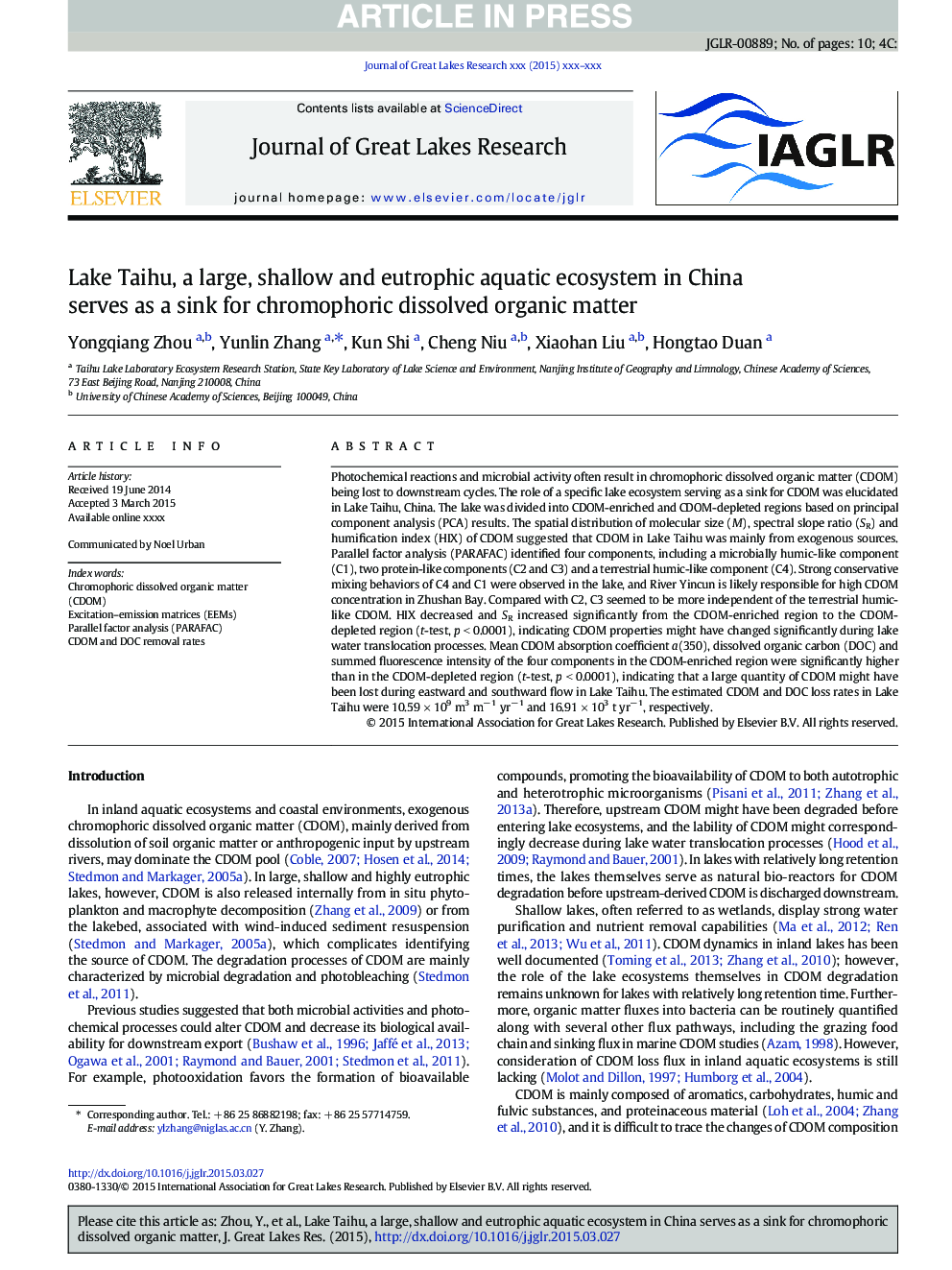| Article ID | Journal | Published Year | Pages | File Type |
|---|---|---|---|---|
| 6305044 | Journal of Great Lakes Research | 2015 | 10 Pages |
Abstract
Photochemical reactions and microbial activity often result in chromophoric dissolved organic matter (CDOM) being lost to downstream cycles. The role of a specific lake ecosystem serving as a sink for CDOM was elucidated in Lake Taihu, China. The lake was divided into CDOM-enriched and CDOM-depleted regions based on principal component analysis (PCA) results. The spatial distribution of molecular size (M), spectral slope ratio (SR) and humification index (HIX) of CDOM suggested that CDOM in Lake Taihu was mainly from exogenous sources. Parallel factor analysis (PARAFAC) identified four components, including a microbially humic-like component (C1), two protein-like components (C2 and C3) and a terrestrial humic-like component (C4). Strong conservative mixing behaviors of C4 and C1 were observed in the lake, and River Yincun is likely responsible for high CDOM concentration in Zhushan Bay. Compared with C2, C3 seemed to be more independent of the terrestrial humic-like CDOM. HIX decreased and SR increased significantly from the CDOM-enriched region to the CDOM-depleted region (t-test, p < 0.0001), indicating CDOM properties might have changed significantly during lake water translocation processes. Mean CDOM absorption coefficient a(350), dissolved organic carbon (DOC) and summed fluorescence intensity of the four components in the CDOM-enriched region were significantly higher than in the CDOM-depleted region (t-test, p < 0.0001), indicating that a large quantity of CDOM might have been lost during eastward and southward flow in Lake Taihu. The estimated CDOM and DOC loss rates in Lake Taihu were 10.59 Ã 109 m3 mâ 1 yrâ 1 and 16.91 Ã 103 t yrâ 1, respectively.
Related Topics
Physical Sciences and Engineering
Earth and Planetary Sciences
Earth and Planetary Sciences (General)
Authors
Yongqiang Zhou, Yunlin Zhang, Kun Shi, Cheng Niu, Xiaohan Liu, Hongtao Duan,
